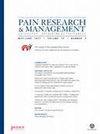基于术后增强恢复方案的踝关节骨折和桡骨远端骨折围手术期治疗方案:一项多中心前瞻性临床对照研究
IF 2.5
3区 医学
Q2 CLINICAL NEUROLOGY
引用次数: 3
摘要
手术后增强恢复(ERAS)计划旨在缩短患者的恢复过程,改善临床结果。本研究旨在比较ERAS方案和传统途径治疗踝关节骨折和桡骨远端骨折的疗效。方法:本研究是一项多中心前瞻性临床对照研究,包括来自12个中心的323例连续踝关节骨折患者和来自13个中心的323例连续桡骨远端骨折患者,计划于2017年1月至2018年12月进行切开复位内固定。根据围手术期方案,将患者分为ERAS组和传统组。主要观察出院时和术后6个月患者对整个治疗的满意度。次要结局包括入院和手术之间的延迟时间、住院时间、术后并发症、功能评分和MOS项目简短健康调查-36。结果共收集了772例踝关节骨折和658例桡骨远端骨折的资料,其中323例踝关节骨折和323例桡骨远端骨折纳入分析。ERAS组患者出院时和术后6个月满意度均高于传统组(P < 0.001)。在亚组分析中,ERAS组桡骨远端骨折患者对治疗更满意(P=0.001)。ERAS组踝关节骨折患者住院时间短(P < 0.001),住院时间短(P < 0.001),桡骨远端骨折患者入院后手术速度快于传统组(P=0.001)。结论基于ERAS方案的围手术期方案满意度高,住院时间短,并发症发生率无增加,功能预后无下降。本文章由计算机程序翻译,如有差异,请以英文原文为准。
Perioperative Protocol of Ankle Fracture and Distal Radius Fracture Based on Enhanced Recovery after Surgery Program: A Multicenter Prospective Clinical Controlled study
Background The enhanced recovery after surgery (ERAS) program is aimed to shorten patients' recovery process and improve clinical outcomes. This study aimed to compare the outcomes between the ERAS program and the traditional pathway among patients with ankle fracture and distal radius fracture. Methods This is a multicenter prospective clinical controlled study consisting of 323 consecutive adults with ankle fracture from 12 centers and 323 consecutive adults with distal radial fracture from 13 centers scheduled for open reduction and internal fixation between January 2017 and December 2018. According to the perioperative protocol, patients were divided into two groups: the ERAS group and the traditional group. The primary outcome was the patients' satisfaction of the whole treatment on discharge and at 6 months postoperatively. The secondary outcomes include delapsed time between admission and surgery, length of hospital stay, postoperative complications, functional score, and the MOS item short form health survey-36. Results Data describing 772 patients with ankle fracture and 658 patients with distal radius fracture were collected, of which 323 patients with ankle fracture and 323 patients with distal radial fracture were included for analysis. The patients in the ERAS group showed higher satisfaction levels on discharge and at 6 months postoperatively than in the traditional group (P < 0.001). In the subgroup analysis, patients with distal radial fracture in the ERAS group were more satisfied with the treatment (P=0.001). Furthermore, patients with ankle fracture had less time in bed (P < 0.001) and shorter hospital stay (P < 0.001) and patients with distal radial fracture received surgery quickly after being admitted into the ward in the ERAS group than in the traditional group (P=0.001). Conclusions Perioperative protocol based on the ERAS program was associated with high satisfaction levels, less time in bed, and short hospital stay without increased complication rate and decreased functional outcomes.
求助全文
通过发布文献求助,成功后即可免费获取论文全文。
去求助
来源期刊

Pain Research & Management
CLINICAL NEUROLOGY-
CiteScore
5.30
自引率
0.00%
发文量
109
审稿时长
>12 weeks
期刊介绍:
Pain Research and Management is a peer-reviewed, Open Access journal that publishes original research articles, review articles, and clinical studies in all areas of pain management.
The most recent Impact Factor for Pain Research and Management is 1.685 according to the 2015 Journal Citation Reports released by Thomson Reuters in 2016.
 求助内容:
求助内容: 应助结果提醒方式:
应助结果提醒方式:


